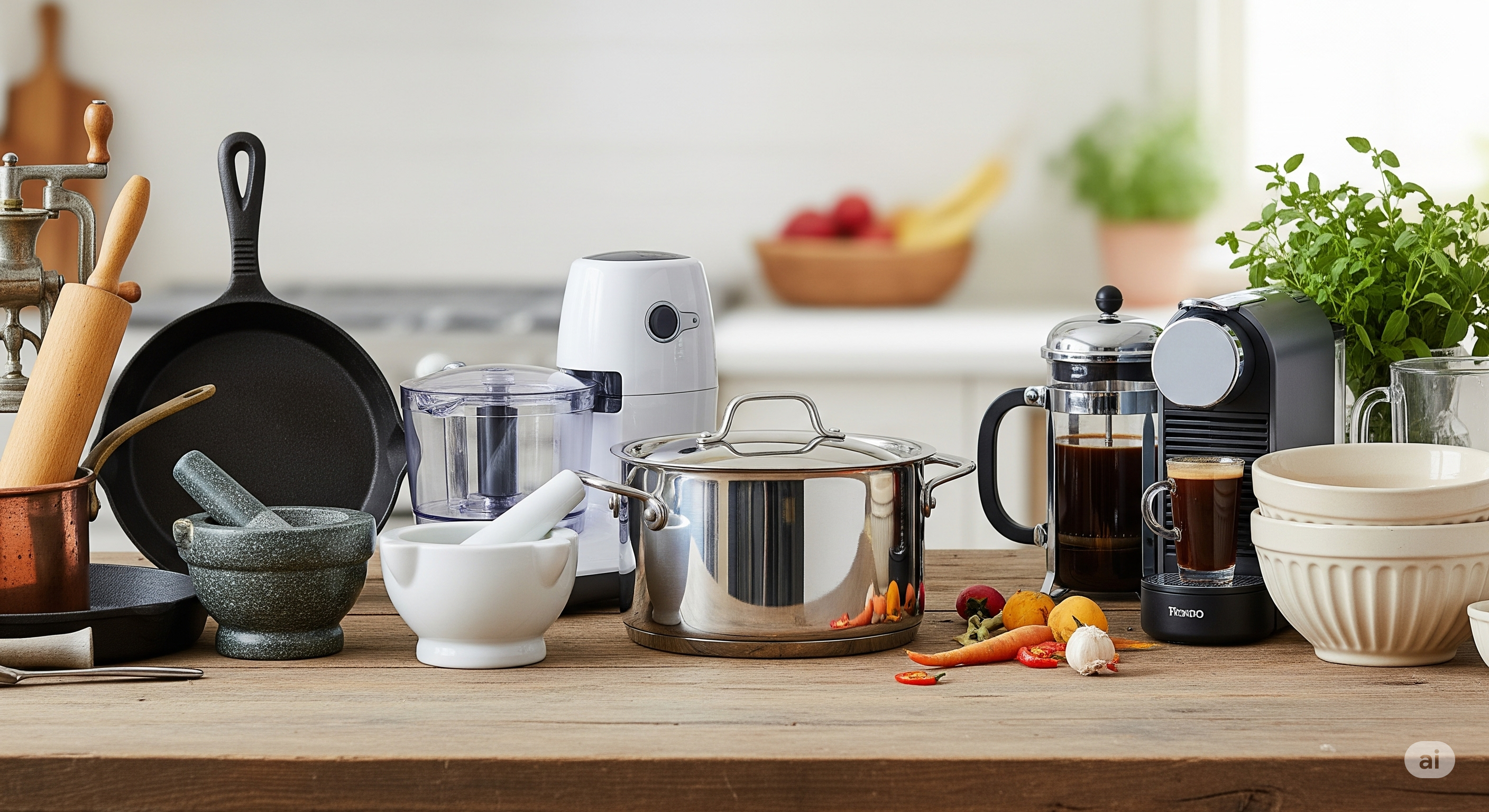Introduction: Timeless Tools
Some kitchen tools have stood the test of time, not just for their function but for their beauty and cultural significance. From the mortar and pestle to the rolling pin, these classics are more than just utensils—they are a bridge between generations, carrying stories and traditions from the past into our modern kitchens. Their enduring appeal lies in their simplicity, reliability, and the sense of connection they bring to the cooking experience. As we explore these timeless tools, we discover how tradition continues to inspire innovation, shaping the way we cook, eat, and share meals with those we love.
1. The Mortar & Pestle
The mortar and pestle is one of the oldest kitchen tools, dating back thousands of years. Its simple design—a heavy bowl and a club-shaped grinder—makes it perfect for crushing spices, herbs, and grains. Unlike electric grinders, the mortar and pestle allow for precise control over texture and flavor, releasing essential oils and aromas that elevate any dish. This tool is celebrated in cuisines around the world, from Italian pesto to Indian masalas. Its enduring popularity is a testament to its effectiveness and versatility, inspiring modern food processors and spice grinders while retaining its place as a beloved staple in traditional kitchens.
2. Cast Iron Cookware
Cast iron cookware has been cherished for generations, prized for its exceptional heat retention and durability. Whether it’s a skillet, Dutch oven, or griddle, cast iron delivers even cooking and develops a natural non-stick surface over time. These pieces are often passed down as family heirlooms, their seasoned surfaces telling stories of countless meals. Modern non-stick pans and enameled cookware owe much to the legacy of cast iron. Its timeless appeal lies in its ability to go from stovetop to oven, and even over an open flame, making it a favorite among home cooks and professional chefs alike.
3. Wooden Spoons
Wooden spoons are a kitchen essential, valued for their gentle touch on cookware and their versatility in stirring, mixing, and serving. Their organic feel and timeless look evoke a sense of warmth and tradition, connecting us to generations of cooks who relied on simple, natural materials. Unlike metal utensils, wooden spoons won’t scratch pots and pans, and they don’t conduct heat, making them safe and comfortable to use. Today’s designers draw inspiration from classic wooden spoons, creating ergonomic shapes and finishes that blend tradition with modern aesthetics, ensuring their continued presence in kitchens around the world.
4. Clay Pots
Clay pots have been used for millennia to slow-cook stews, soups, and grains, imparting a unique flavor and tenderness to food. Their porous nature allows for gentle, even heat distribution, preserving nutrients and enhancing taste. From Indian curries to Mediterranean tagines, clay pots are celebrated in diverse culinary traditions. Modern slow cookers and ceramic bakeware draw inspiration from these ancient vessels, combining the benefits of traditional cooking with contemporary convenience. The enduring popularity of clay pots speaks to their effectiveness and the rich, comforting flavors they help create, making them a cherished tool in kitchens old and new.
5. The Rolling Pin
The rolling pin is a universal tool, essential for baking everything from flatbreads to pastries. Its simple cylindrical form has remained largely unchanged for centuries, a testament to its effectiveness. Rolling pins are used in kitchens around the world, adapting to local traditions and recipes. Modern baking gadgets and pasta machines echo the design and function of the classic rolling pin, blending tradition with innovation. Whether made of wood, marble, or stainless steel, the rolling pin continues to inspire creativity and bring people together through the joy of baking, making it a beloved staple in every baker’s toolkit.
